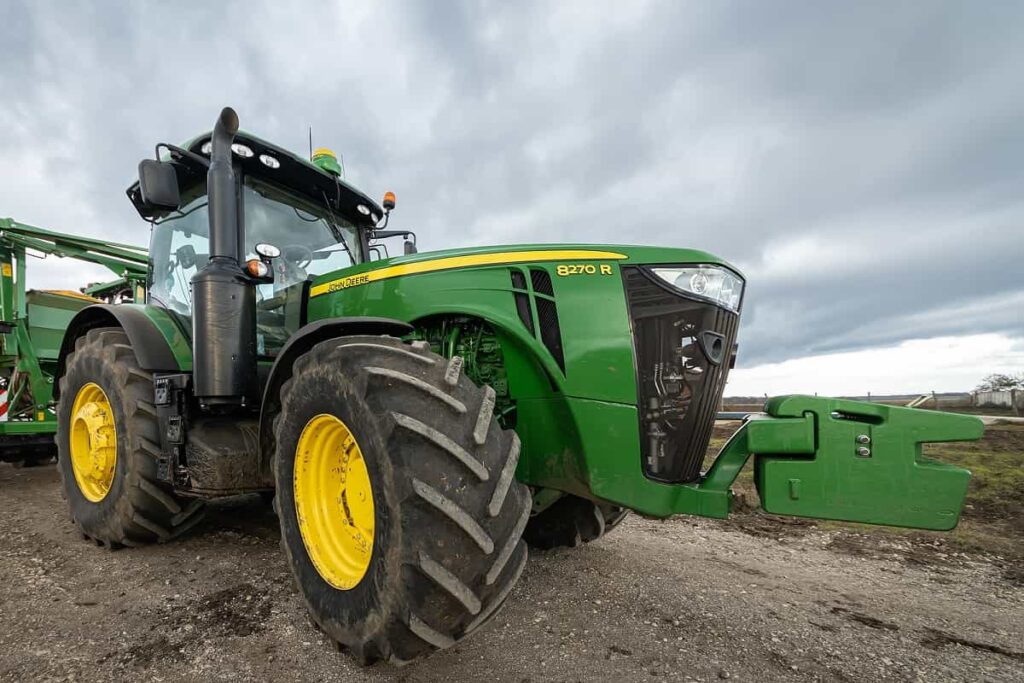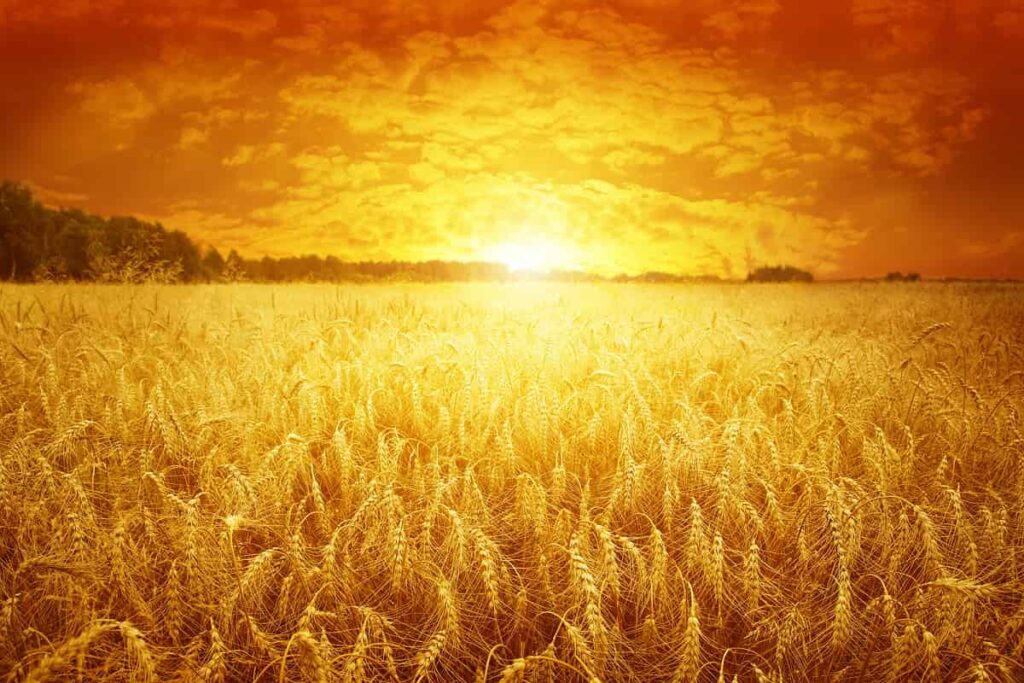11 Agriculture Imaging Solutions for Crops
Table of contents

The Landsat program is a joint NASA/USGS program that provides the longest continuous space-based record of Earth’s land in existence since its launch back in 1972. Forty-seven years later, human beings have found countless applications for satellite imaging technology from a global air traffic control system to global Internet for the masses. You can now use satellites to monitor store parking lots and make predictions about retail sales, or to see how much ore is being moved at mines so you can predict commodity prices. You can even use satellite imaging to take a peek at Kim Jong-un’s palace in the DPRK where – if you look real close – you can see him out on the blacktop shooting hoops every Thursday afternoon.

There are lots of useful applications for satellite technology, but perhaps none more useful than creating more food to eat. With approximately 37% of the planet’s land utilized for agricultural purposes and over seven billion people to feed, we’re increasingly turning to technology for more food. We’re able to use IoT sensors to generate big data which we then feed to hungry machine learning algorithms. We can use gene editing to make canola farming more profitable. And we can use imaging to help growers with farm management by providing valuable data that leads to optimal yields and increased profitability. Here are ten examples of agriculture imaging solutions courtesy of the 2018 Agtech Investment Review produced by Finistere Ventures and PitchBook.
Resson Aerospace
Founded in 2013, New Brunswick, Canada firm Resson Aerospace describes themselves as a “bioinformatics and data analytics company, delivering customized agriculture solutions for large corporate clients,” as evident by investors that include Monsanto and Mahindra & Mahindra. The startup has raised $27.7 million in funding so far to develop a crop management software platform called the Resson Agricultural Management and Analytics System (RAMAS) which helps farmers by using imagery for:
- Pest and disease detection for spray optimizations – cuts costs
- Nutrient monitoring to optimize fertilizer application – cuts costs
- Moisture assessment for irrigation effectiveness – cuts costs
- Plant tracking for yield maximization – increases revenues
RAMAS primarily uses cameras mounted on drones and tractors to gather data on crops. Using predictive analytics, Resson’s system shares suggestions on how farmers can better manage their yields along with an analysis of the crop inputs. As with any predictive analytics solution, expect it to only get better as time goes on.
Taranis
Founded in 2014, Israeli startup Taranis has taken in $29.5 million in funding so far to give farmers the ability to more accurately predict yields throughout the growing season. The company does this by providing the growers with a “stand count” of the farm which is the number of seeds that fruitfully emerged after seeding. This information helps growers determine how and what to re-plant in particular areas of their fields. At the moment, the majority of Taranis’ clients are broad-acre row-crop farmers – think corn, potatoes, or soybeans.

The Taranis system can also identify various species of weeds which helps growers deploy the most effective herbicide applications to fight off weed infestations. Once the herbicides have been applied, the system re-evaluates the situation and tells the farmer whether or not there was a resistance to the solution. Taranis can also determine insect risk along with nutritional deficiencies of crops simply by looking at leaves.
A typical package from the company includes five to six airplane flybys annually, which can produce images that are 500 times more accurate and detailed than other platforms – according to the Taranis PR team, at least. It’s that sort of detail that allowed Taranis to actually observe the migration pattern of Japanese beetles across various fields in Indiana.
Update 07/21/2020: Taranis has raised $30 million in Series C funding to identify new pests or weed varieties for a widening range of crops. This brings the company’s total funding to $59.6 million to date.
Agremo
While researching what stand counts are all about, we came across another firm providing stand count data. A Serbian firm called Agremo has taken in around $750,000 to build their own solution that does stand counts and also plant health analysis. They’re great at SEO because if you Google the term “stand count,” they’re the first result from where we’re sitting. They’ve used their solution to analyze more than 100 crops in more than 100 countries, for several thousand users.

Agremo is used by forestry management companies in the U.S., as well as large agriculture firms such as German seed producer KWS who is using Agremo for their corn and winter oilseed rape operations in Europe.
Satellogic
Founded in 2010, Silicon Valley startup Satellogic has taken in $29 million in funding so far to develop the “world’s vertically integrated geospatial analytics company.” With Tencent as the startup’s major investor, it’s no surprise they’ve bagged a deal with a Chinese state-owned rocket-launching firm, China Great Wall Industry Corp. Satellogic plans to deliver a total of 90 satellites into orbit which can perform a remapping of the Earth on a weekly basis making them one of at least 10 SmallSat Startups Launching Fleets into Outer Space.
These satellites will be deployed into low Earth orbit and are scheduled to be launched by the end of next year. Satellogic plans to compete with other earth mapping firms – like geospatial intelligence firm Planet Labs – by offering an astounding one-meter resolution. To put things in perspective, this kind of satellite imaging could allow clients to accurately monitor the ripeness of coffee beans. Satellogic is reported to be building their satellites somewhere in Uruguay, one of the few countries in the world where it’s legal to puff the magic dragon.
Sentera
Founded in 2014, Minneapolis startup Sentera has taken in $22.5 million in funding so far to develop a platform that allows you to view your fields in real-time – the first solution of its kind. It operates at the edge – meaning it operates completely off your laptop in the field – providing you with information on weed maps, zone mapping, and population analysis.
A farmer can easily map out their fields using the satellite images provided and then activate the Field Agent which will automatically scout the designated zones capturing imagery as it goes along offering up instant analytics. The capability is currently offered for corn, soybeans, and potatoes, with additional crop-compatibility being added.
DroneDeploy
Founded in 2013, San Francisco startup DroneDeploy has increased their funding to $56 million since we last looked at them in our article on 11 Startups for Drone Mapping and Aerial Imagery. Raising money gets a whole lot easier when you’ve partnered with SoftBank, Accenture, and The Climate Corporation, which have helped them reach over 30,000 users and map roughly 30 million acres across 180 countries.

DroneDeploy’s latest innovation is the Live Map, which is a real-time mapping app that stitches thermal imagery with RGB on the edge via a smartphone, all of which results in really slick looking images of your fields that will make you the envy of everyone down at the co-op.
Prospera
Founded in 2014, Israeli startup Prospera was previously featured in our article on the Top 10 Israeli Artificial Intelligence Startups and has taken in $22 million in funding so far to offer a sophisticated platform that now monitors $5 billion worth of produce in 4,700 different fields. This self-described “machine learning powerhouse” analyzes more than 50 million data points a day using cameras that can detect even minor changes to crops using an extensive database of studies on plant diseases, crop stress, and nutrient deficiencies. The platform then alerts the growers of any issue detected. With large corporates like Qualcomm and Cisco helping to fund Prospera, it’s no surprise to see their client roster includes names like Walmart, Tesco, Sainbury’s, and Aldi.
PrecisionHawk
Founded in 2011, North Carolina startup PrecisionHawk has taken in $104 million in funding so far to develop a completely autonomous drone that can conduct aerial data collection at low altitudes which subsequently provide suggestions to growers. Using either multi-rotor or fix-winged drones, the analytical algorithms can provide information on various crop factors like canopy cover, volume measurement, and field uniformity.

Since we last looked at PrecisionHawk, they took in a $75 million Series D round that included an impressive list of tech companies like Intel, Comcast, and Verizon, as well as agricultural firms like Syngenta and DuPont. This makes the North Carolina startup one of a handful of agtech investments made by DuPont.
Hangar Technology
Founded in 2016, Austin startup Hangar Technology has taken in $6.5 million in funding so far to offer a more advanced way of satellite imaging. The company bills itself as the world’s first robotics-as-a-service data acquisition platform. Compared to other commercial drones – which require you to manually plan every aerial imaging mission – the startup’s value proposition is a fully-automated system that eliminates the need for expert pilots or drone operations managers.
Hangar offers the ability for growers to simply show up at their preferred location along with their fully equipped drone. After pressing a big red launch button, the drone flies off to do drone-type things and returns afterwards, while made to order maps, graphs, clips, and photos start popping up in the client’s inbox.
TerrAvion
Founded in 2013, San Leandro, California startup TerrAvion has taken in $10.1 million in funding so far to offer farmers detailed images of their farms at an economical price point. The startup gathers the data from a fixed number of flights they take every growing season that cover the majority of ‘Murica’s farmlands.

Their pricing is quite competitive at only $4 per acre depending on the region. Although TerrAvion provides a relatively low-cost alternative to satellite imagery, the company has a unique perspective on the difficulties of gathering data via drone given that their CEO led the United States Army’s first drone platoon in Afghanistan. TerrAvion also uses airplanes equipped with sensors to provide growers information on irrigation concerns, soil status or issues, and growth anomalies that all stand to impact yield.
Ceres Imaging

While a number of satellite imaging companies opt for NVDI or RGB images, Ceres Imaging utilizes six varying spectrum bands. According to the company, positioning custom-built sensors on fixed-winged aircraft is the most effective way of capturing images and gathering data. This agriculture imaging system allows them to acquire data at higher resolutions and with better quality compared to satellites or drones.

They claim that the test images they shared with growers and potential retailers revealed crop issues earlier by weeks compared to other firms using NDVI or even true color pictures. The company was also featured in our article on water technology startups in agriculture,
Conclusion
There are only 2.1 million farms across the United States in charge of feeding more than 328 million people in the country, not to mention 25% of what they produce by value gets exported. Ninety-nine percent of these farms are actually run and operated by families, with these growers and ranchers receiving only 15 cents for every dollar they earn, a far cry from back in the 1980s when farmers pocketed 31 cents for each dollar they made at the time. Using agriculture imaging to make farming more profitable means more people will want to produce food. And that’s a good thing.
Sign up to our newsletter to get more of our great research delivered straight to your inbox!
Nanalyze Weekly includes useful insights written by our team of underpaid MBAs, research on new disruptive technology stocks flying under the radar, and summaries of our recent research. Always 100% free.














